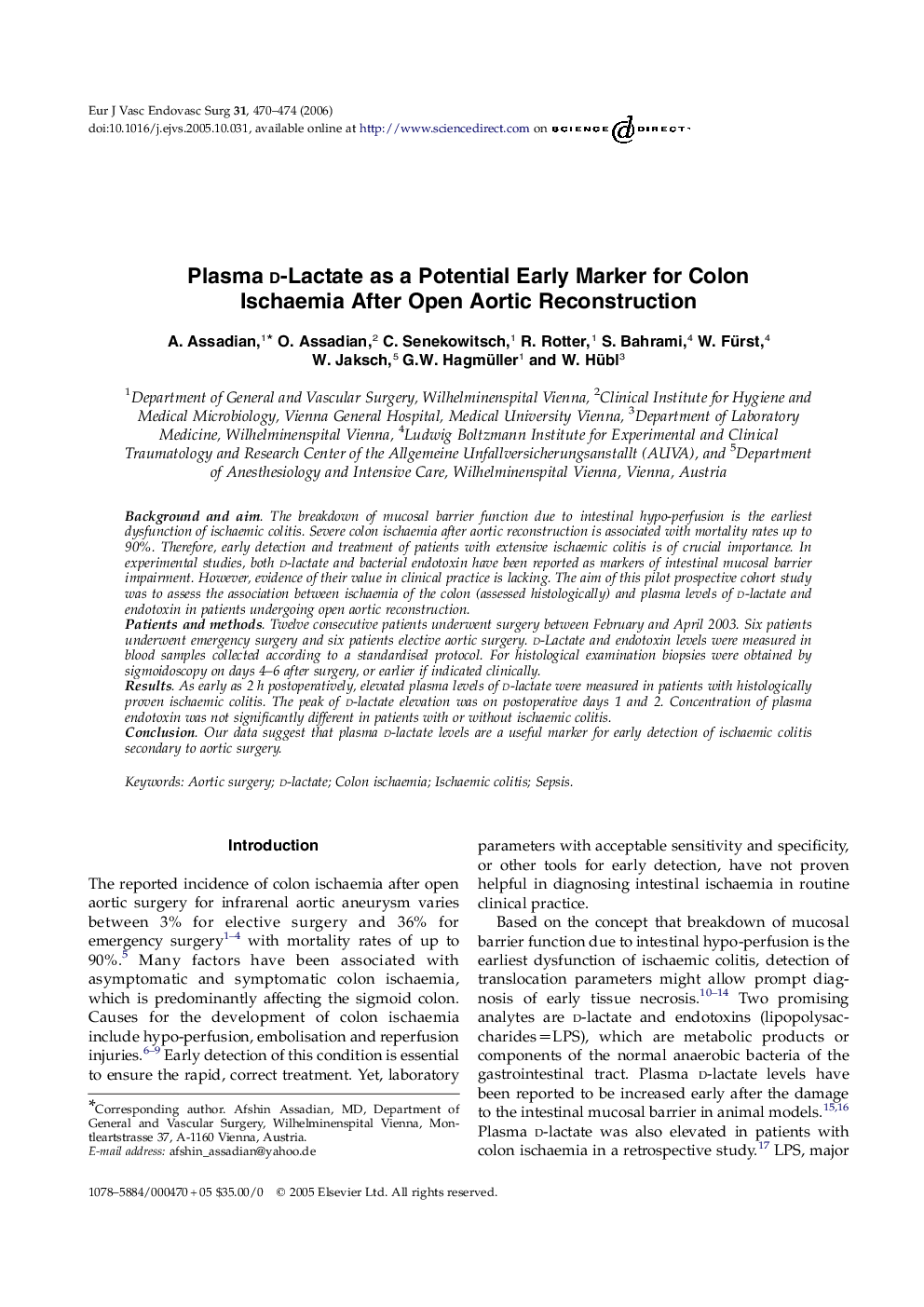| Article ID | Journal | Published Year | Pages | File Type |
|---|---|---|---|---|
| 2914834 | European Journal of Vascular and Endovascular Surgery | 2006 | 5 Pages |
Background and aimThe breakdown of mucosal barrier function due to intestinal hypo-perfusion is the earliest dysfunction of ischaemic colitis. Severe colon ischaemia after aortic reconstruction is associated with mortality rates up to 90%. Therefore, early detection and treatment of patients with extensive ischaemic colitis is of crucial importance. In experimental studies, both d-lactate and bacterial endotoxin have been reported as markers of intestinal mucosal barrier impairment. However, evidence of their value in clinical practice is lacking. The aim of this pilot prospective cohort study was to assess the association between ischaemia of the colon (assessed histologically) and plasma levels of d-lactate and endotoxin in patients undergoing open aortic reconstruction.Patients and methodsTwelve consecutive patients underwent surgery between February and April 2003. Six patients underwent emergency surgery and six patients elective aortic surgery. d-Lactate and endotoxin levels were measured in blood samples collected according to a standardised protocol. For histological examination biopsies were obtained by sigmoidoscopy on days 4–6 after surgery, or earlier if indicated clinically.ResultsAs early as 2 h postoperatively, elevated plasma levels of d-lactate were measured in patients with histologically proven ischaemic colitis. The peak of d-lactate elevation was on postoperative days 1 and 2. Concentration of plasma endotoxin was not significantly different in patients with or without ischaemic colitis.ConclusionOur data suggest that plasma d-lactate levels are a useful marker for early detection of ischaemic colitis secondary to aortic surgery.
